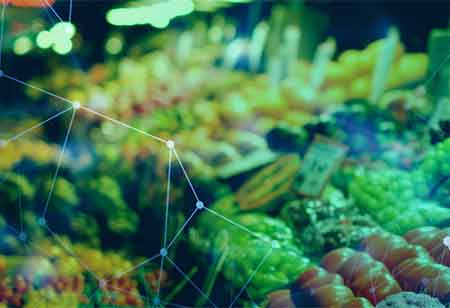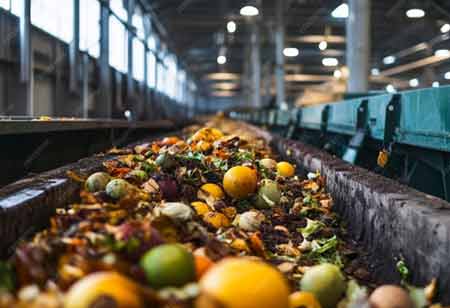THANK YOU FOR SUBSCRIBING
Be first to read the latest tech news, Industry Leader's Insights, and CIO interviews of medium and large enterprises exclusively from Food and Beverage Tech Review
How 3D Printing Is Shaping the Future of Food Production
3D printing transforms the food industry by enabling sustainable customisation, improved nutrition, creative culinary possibilities, and food production and consumption efficiency.

By
Food and Beverages Tech Review | Tuesday, October 07, 2025
Stay ahead of the industry with exclusive feature stories on the top companies, expert insights and the latest news delivered straight to your inbox. Subscribe today.
3D printing transforms the food industry by enabling sustainable customisation, improved nutrition, creative culinary possibilities, and food production and consumption efficiency.
FREMONT CA: 3D printing is transforming the food industry, offering innovative solutions that are shaping the future of food production. By utilising additive manufacturing technologies, 3D printing allows for the precise creation of food items with intricate designs, custom textures, and unique flavour combinations. This technology is transforming food production by enabling greater sustainability, reducing food waste, and improving the efficiency of food manufacturing processes. With its ability to create food from a range of raw materials, including plant-based proteins, sugars, and even chocolate, 3D printing enhances the creativity and personalisation of meals. It offers new possibilities for nutrition and food accessibility.
Customisation and Personalisation: 3D printing in the food industry enables an extraordinary level of customisation. This technology allows chefs and home cooks to create meals tailored to individual preferences, from altering the shape and texture to adjusting the nutritional content of dishes. For example, personalised pizzas can feature toppings arranged in unique designs, or chocolates can be crafted with specific ingredients that cater to one’s taste. This flexibility offers consumers a more tailored dining experience, making food unique.
Nutritional Innovation: The potential of 3D food printing to address dietary challenges is one of its most exciting aspects. Printing meals with specific nutrients or supplements makes it possible to cater to special dietary needs or health objectives. This technology could produce meals with balanced macro and micronutrients, potentially reducing malnutrition. Through customised nutrition, 3D printing could transform how they approach dietary health and well-being, particularly for those with unique nutritional requirements.
Sustainability: 3D printing presents a promising solution for more sustainable food production. By using alternative protein sources such as algae or insect-based ingredients, this technology could reduce reliance on traditional livestock farming, which has a significant environmental impact. Furthermore, 3D printing allows for precise ingredient usage, reducing food waste by ensuring that only the necessary quantities are used in meal preparation. Combining alternative ingredients and reduced waste could contribute to a more sustainable food system in the long term.
Creative Culinary Art: 3D printing's creative potential in the food industry is vast. It allows chefs to design and produce intricate shapes and textures that were once impossible using traditional cooking methods. This ability to create complex, visually striking food items could lead to novel dining experiences and push the boundaries of culinary art. From decorative food sculptures to uniquely textured dishes, 3D printing is opening up new avenues for food innovation and creativity in the kitchen.
Accessibility and Convenience: As 3D printing technology becomes increasingly accessible, it can reshape meal preparation in households and specialised environments like space stations. Astronauts, for example, could receive freshly printed meals on demand while in space, and individuals in remote locations could use 3D printers to create nutritious meals from locally sourced ingredients. This convenience and accessibility could redefine food preparation, making it possible to enjoy diverse and healthy meals in various settings.
Food Safety and Hygiene: 3D printing technology has the potential to improve food safety by reducing human contact during the food preparation process. By minimising the handling of ingredients, 3D printing can help maintain the consistency and quality of the food produced. Additionally, it offers the possibility of creating foods with modified textures or densities, making them easier to digest or better suited to prevent foodborne illnesses. With these advantages, 3D printing could significantly enhance hygiene and safety standards in food production.
The Evolution of 3D Printing in Food: Since its inception in the 1980s, 3D printing has evolved from a novelty to a widely adopted manufacturing technology. Initially known for its customisation and waste reduction capabilities, 3D printing has found applications across various industries, including construction and medicine. This technology has started to significantly impact the food and beverage sector in recent years, offering new ways to innovate food production and consumption. With its ability to customise, reduce waste, and offer new creative possibilities, 3D printing is poised to continue transforming the food industry.
As this technology continues to evolve, it paves the way for more personalised dining experiences, better nutrition, and more efficient food production processes. With the potential to reduce food waste, improve food safety, and provide new culinary possibilities, 3D printing is transforming how food is created and consumed, making it a key player in the future of the global food landscape.
I agree We use cookies on this website to enhance your user experience. By clicking any link on this page you are giving your consent for us to set cookies. More info







